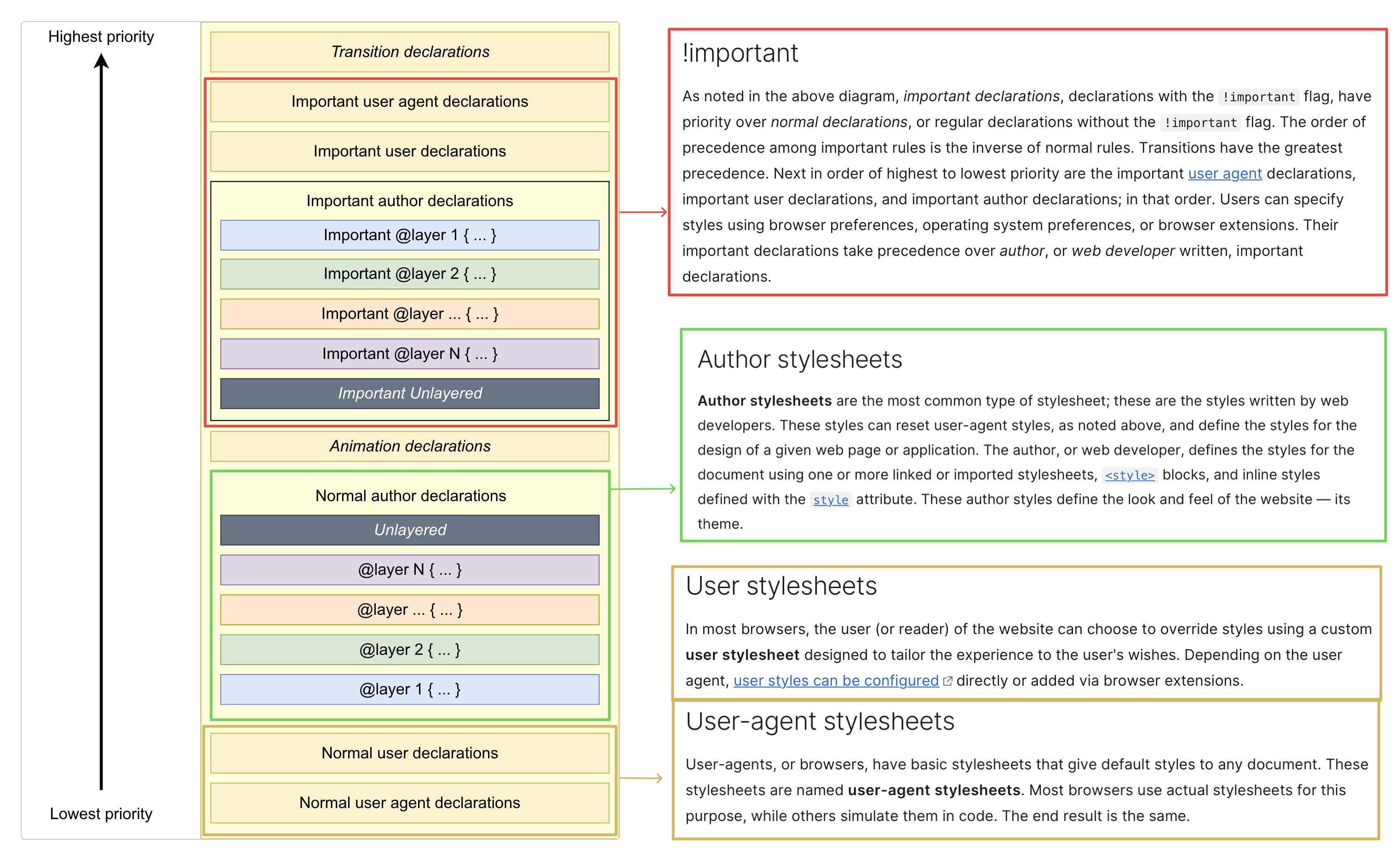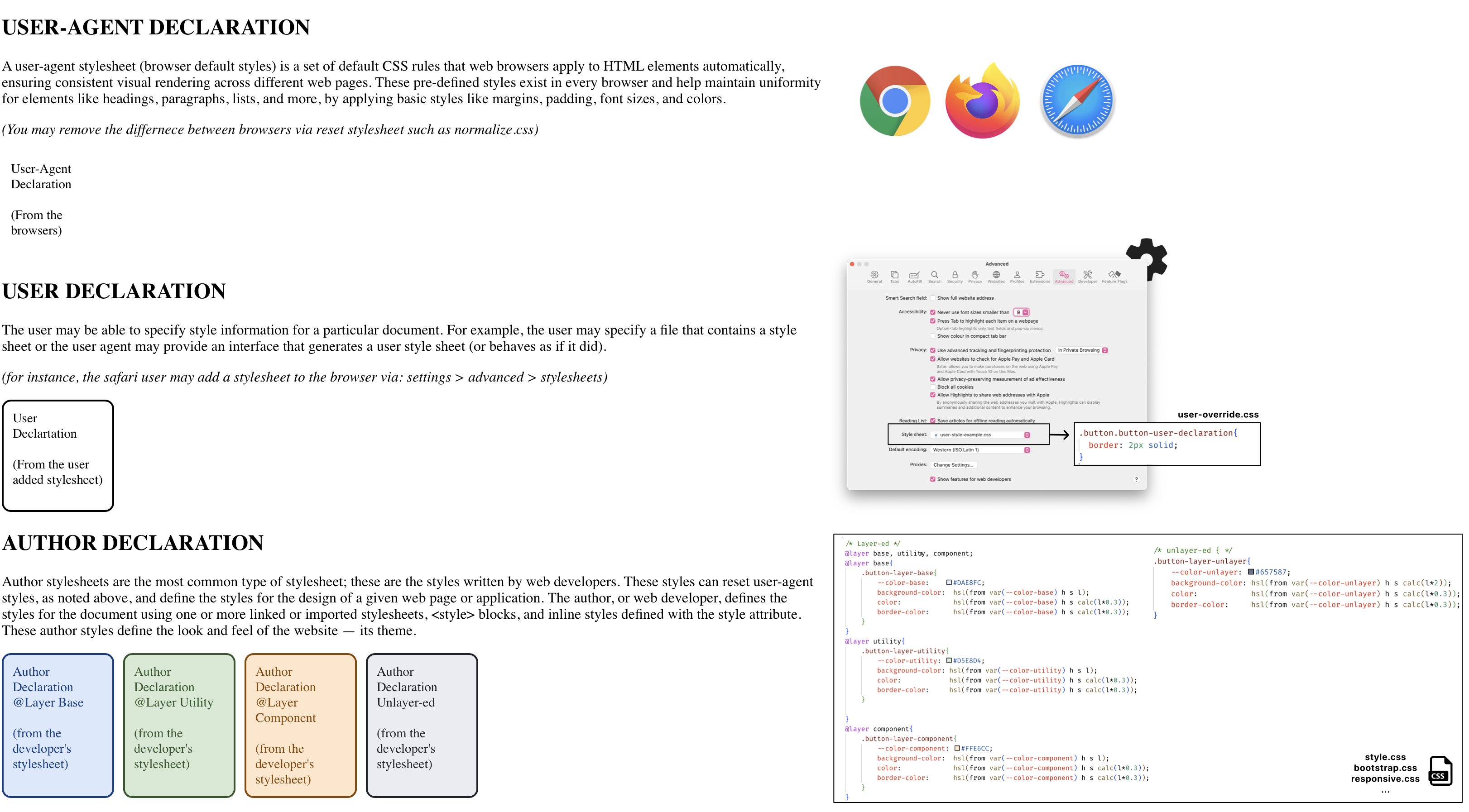TLDR;

Explaination
User-Agent Stylesheets
User-agents, or browsers, have basic stylesheets that give default styles to any document. These stylesheets are named user-agent stylesheets. Most browsers use actual stylesheets for this purpose, while others simulate them in code. The end result is the same.
Although some constraints on user-agent stylesheets are set by the HTML specification, browsers have a lot of latitude: that means some differences exist between browsers. To simplify the development process, Web developers may use a CSS reset stylesheet, such as normalize.css, which sets common properties values to a known state for all browsers before beginning to make alterations to suit their specific needs.
User stylesheets
In most browsers, the user (or reader) of the website can choose to override styles using a custom user stylesheet designed to tailor the experience to the user’s wishes. Depending on the user agent, user styles can be configured directly or added via browser extensions.
Author Stylesheets
Author stylesheets are the most common type of stylesheet; these are the styles written by web developers. These styles can reset user-agent styles, as noted above, and define the styles for the design of a given web page or application. The author, or web developer, defines the styles for the document using one or more linked or imported stylesheets,<style> blocks, and inline styles defined with the style attribute. These author styles define the look and feel of the website — its theme.
Important Stylesheets
As noted in the above diagram, important declarations, declarations with the !important flag, have priority over normal declarations, or regular declarations without the !important flag. The order of precedence among important rules is the inverse of normal rules. Transitions have the greatest precedence. Next in order of highest to lowest priority are the important user agent declarations, important user declarations, and important author declarations; in that order. Users can specify styles using browser preferences, operating system preferences, or browser extensions. Their important declarations take precedence over author, or web developer written, important declarations.
Within author styles, all important declarations within CSS layers take precedence over any important declarations declared outside of a layer, while all normal declarations within CSS layers have a lower priority than declarations declared outside of a layer. The declaration order matters. The first declared layer gets the lowest priority and the last declared layer gets the highest priority. However, the priority is reversed when the !important flag is used.
Example

(the original file can be found at: example-index.html.zip)